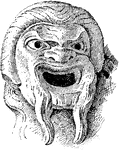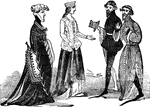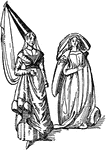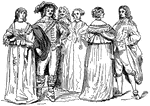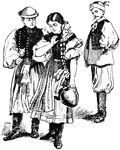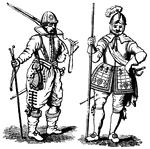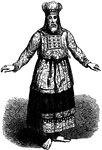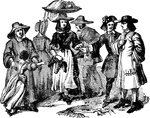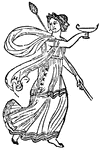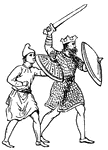The Complete Costumes ClipArt gallery offers 354 illustrations of men and women wearing outfits of various historical periods.
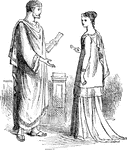
Man and Woman in Roman Clothing
An illustration of a man and woman standing in typical Roman clothing. Clothing in ancient Rome generally…

Egyptian Man's Costume
This is an Egyptian Man's costume that was typically worn during the Old Kingdom. It consists of a wrap…

Egyptian Man's Costume
This is an Egyptian Man's costume that was worn by priests during the 5th Dynasty. It shows a man wearing…

Egyptian Man's Costume
This is an Egyptian Man's costume that was typically worn during the 5th Dynasty. It consists of a triangular…

Mantle
An illustration of a mantle, a type of loose garment usually worn over indoor clothing to serve the…

Military Costume
"The military camail, again, the representative of the mail-coif of earlier times, found a parallel…

Late 19th Century Misses Blouse
This late 19th century misses blouse is designed with lace material at the neck and wrist area, and…

Late 19th Century Misses Dress
This late 19th century misses dress is designed with lace trim. It has puffed sleeves, and a fitted…
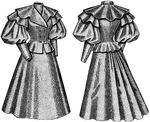
Late 19th Century Misses Outfit
This late 19th Century misses outfit is shown in its front and back view. It is comprised of a double…

A Monk with a Pointed Hood and Crosses on His Habit
Illustration of a monk, displaying an open book. His hood is pointed and appears to be unattached from…

Wantage Church Monument
A church monument of a woman in Wantage during the fourteenth century. She is wearing a dress, cape,…
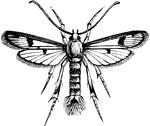
Sugar-Maple Moth
An illustration of a sugar-maple moth. A moth is an insect closely related to the butterfly, both being…

Native American Boy with Headdress
An illustration of a boy wearing a Native American costume and headdress.

Girl's Outfit
This girl's outfit is a late 19th century design. It is comprised of a jacket with puffed sleeves and…

Late 19th Century Lady's Outfit
This Late 19th century lady's outfit consists of a long jacket with puffed sleeves and a long skirt.…

Late 19th Century Lady's Outfit
This Late 19th century lady's outfit consists of a fitted jacket with puffed sleeves, a long skirt and…

Late 19th Century Lady's Outfit
This Late 19th century lady's outfit consists of a fitted jacket with puffed sleeves, and a long dress…
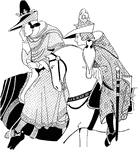
14th Century Parti-Colored Dresses
This is a drawing of two ladies wearing 14th century parti-colored dresses, which are dresses with a…

A Dutch Patroon
In the United States, a patroon was a landholder with manorial rights to large tracts of land in the…

Pourpoint
A stuffed and quilted garnet that is tight fitting. Worn by men on the fourteenth century.

Late 19th Century Promenade Dress
This Late 19th Century Promenade dress is designed for taking walks. It includes a jacket that has puffed…

Puritan Costumes
A Puritan of 16th and 17th century England was an associate of any number of religious groups advocating…

Puritan Male
The Puritans were a group of English Reformed Protestants in the 16th and 17th centuries who sought…

Roman Soldiers
The distinction between rank and unit type doesn't seem to have been as precise as in a modern-day army,…

A Roman Standard-Bearer called an Aquilifer
Illustration of an aquilifer carrying the eagle standard for his Roman legion. His left hand sits on…

Roman Toga - View from the Back
A view of the back of a Roman toga. The man stands with his right foot slightly behind his left, as…

Roundhead
What a Roundhead wore. Roundhead was the name given to the supporters of the Parliament of England during…
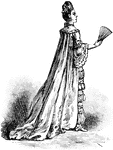
Sack
A women wearing a sack. A gown of particular form which was first introduced from France into England…

